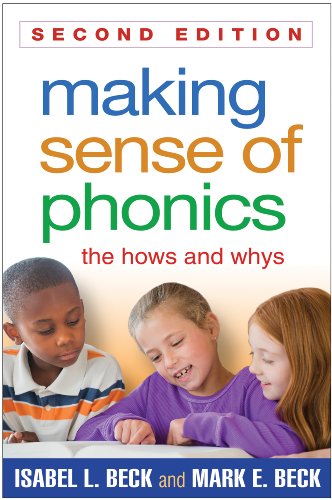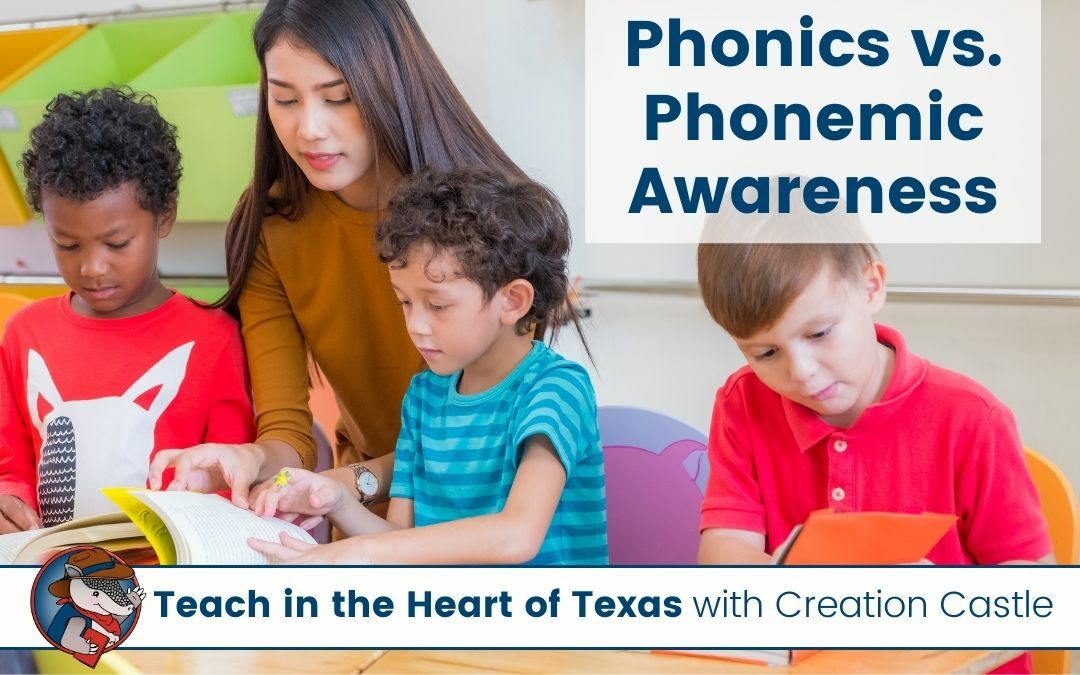If you went to college to become an elementary school teacher, you undoubtedly took a course or seven on reading instruction to learn about things like the alphabetic principle, phonics vs phonemic awareness, and more. Literacy Foundations, Phonological and Orthographic Principles in Reading, Literacy Assessment and Instruction, and Reading and Language Arts across the Curriculum are just a few of the required classes at my alma mater today.
However, chances are you were overwhelmed with all your coursework, job, and life that not everything stuck. Understanding the fundamentals of reading and writing instruction is important for leading a class of successful students.
So let’s do a little refresher on phonics vs phonemic awareness.
Quick Links
What is Phonics?
At its core, phonics is the relationship between letters (graphemes) and sounds (phonemes). This obviously correlates to reading, spelling, and writing. A strong foundation in phonics gives students the knowledge of sound-spelling relationships which help them decode words. This skill is most used in reading, but can also be applied to writing as well.
What is Phonemic Awareness?
Phonemic awareness, on the other hand, is the basic understanding that spoken words are made of separate sounds (phonemes). Did you catch the difference between phonics and phonemic awareness? Phonics is about what is written, whereas phonemic awareness is about what is spoken.
Why Are These Important?
Phonics and phonemic awareness work together. Students need to understand the spoken letter-sound relationships (through phonemic awareness) before they can apply that knowledge to written words (phonics).
If you follow a well thought out, systematic instructional plan that is explicit, it is probably the most powerful tool you can give your early readers. In fact, some will argue that phonics is the most crucial part of teaching a child to read. While this knowledge is a powerful tool, it is not the only one students need to become successful readers. You will need to equip your students with several strategies (tools) to use when encountering texts. However, this is a great place to start!
Phonics will help students map out sounds, allowing them to spell and decode words. Decoding words will help students recognize words faster when reading any text. The more automatic their reading becomes, the more fluently they will move through texts. When they fluently read, they can focus on the meaning of the text and comprehend what they are reading.
As you can imagine, if you don’t explicitly teach your students phonics, it could cause a snowball of negative effects down the line as they progress through school. Phonemic awareness should begin right away in kindergarten and by the end of the year they should have moved on to phonics – at least reading CVC words. First grade is where phonics really kicks into high gear and students will learn most of their sound-spelling relationships.

Want to Learn More About Phonics vs Phonemic Awareness?
One of my favorite books for diving deep into phonics is Making Sense of Phonics (2013). This book provides tools and strategies for explicit, systematic phonics instruction. It covers decoding, letter-sound relationships, blending, word building, multisyllabic decoding, fluency, and more. There are also classroom activities, examples, and a complete phonics assessment.

Creation Castle
Heather is the author of Creation Castle. She has experience with general education, special education, and ESL students in kindergarten through fifth grade. She specializes in early elementary math and literacy, as well as organization.






